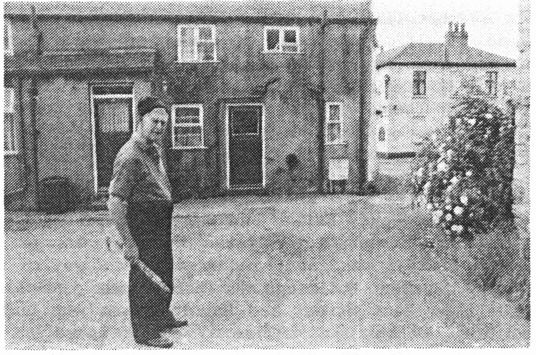 |
| Tony Shinn in the yard behind his old home 'No.l, The Cross Hill' (now known as The Cross). |
| "Two are better than one: because they have good
reward for their labour. For if they fall, the one will lift up his fellow: but woe to him that is alone when he falleth: for he hath not another to help him up. Again, if two lie together then they have heat; but how can one be warm alone?" |
 |
| Tony Shinn in the yard behind his old home 'No.l, The Cross Hill' (now known as The Cross). |
| In loving memory of |
| MADELINE |
| Wife of Richard Hurray, |
| who died September 4th. 1906 aged 26 years |
| 'Until the Day Dawns' |
| . |
| Also of RICHARD HURRAY |
| who died January 4th. 1938 aged 62 years |
| Footnote: Tony Shinn asserts in this article that Barwick was the capital of Elmet. This was the view held by villagers until the Historical Society began to show that it could not be substantiated piece of legend. It may have arisen from the belief that as earthworks in Barwick were the largest in Elmet and it thus "must" have been the capital of the "Kingdom" of Elmet. This assumption is based on two different periods of history. The earthworks date from the Iron Age and the "Kingdom" of Elmet was post-Roman. |